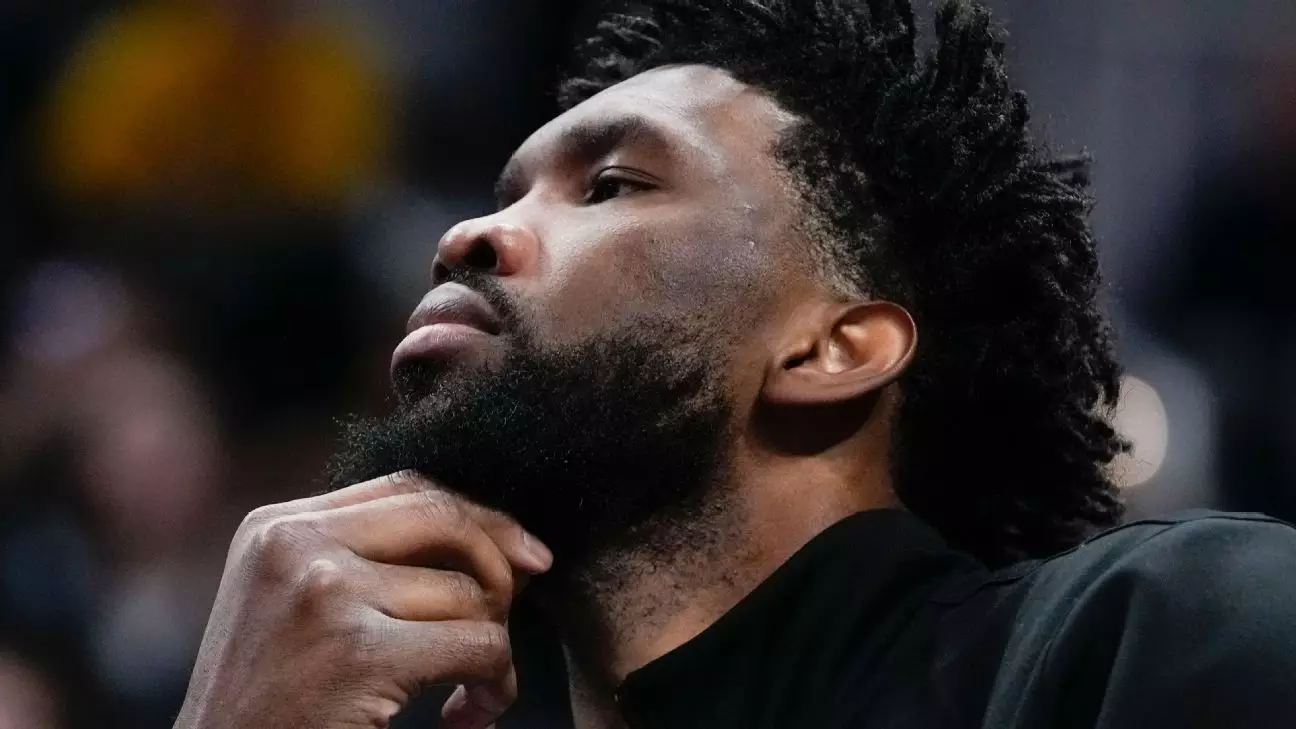In the competitive landscape of professional basketball, injuries can hinder even the most talented players’ careers. Two athletes prominently affected by such adversity this season are Joel Embiid of the Philadelphia 76ers and Paul George of the Los Angeles Clippers. Both players find themselves sidelined due to left knee injuries, each missing the first stretch of the season, highlighting the substantial burden of physical ailments that can weigh heavily on athletes’ performance and psyche.
Joel Embiid, drafted third overall in the 2014 NBA Draft, has become one of the league’s most dominant centers, yet his career has been marred by injuries. Despite a gold medal triumph with Team USA in the 2024 Paris Olympics, Embiid has not suited up for a single game in the current NBA season. His involvement in practice has sparked hope among fans and analysts, yet the reality remains: recurring injuries have often derailed his trajectory. In his case, “left knee management” has been the official term for a situation that seems all too familiar for a player who previously battled significant issues, including surgery that limited him to just 39 games last season.
Similarly, Paul George’s situation has raised eyebrows. Yet to see the court this season due to a bone bruise on his left knee, George participated fully in practice, mirroring Embiid’s situation. Both stars are working diligently on their recovery, demonstrating resilience in facing their ongoing struggles with health. However, their absence from games not only impacts their teams but also shapes the perception of their commitment, as fans may incorrectly interpret missed games as unwillingness to participate.
Communication and Its Consequences in Team Management
Philadelphia’s front office recently faced scrutiny regarding how they communicated Embiid’s health status to the public. The NBA fined the 76ers $100,000 for statements that conflicted with the league’s player participation policy, which raised questions about transparency in team management. Such miscommunication can damage the trust not only between players and management but also between teams and their fans.
Embiid expressed his frustrations regarding public speculation about his willingness to play, citing a history of injuries that speaks to his commitment to the game. He reflects on his experiences, highlighting the immense physical risks he has endured throughout his career. His comments serve as a powerful reminder of the sacrifices elite athletes make to perform at the highest level. The challenges Embiid faces extend beyond physical ailments; they reach into the realm of mental endurance, as he grapples with the fear of re-injury—a mental hurdle that can be as daunting as the physical pain of the injury itself.
Looking Ahead: The Road to Recovery
Both players are now at a crossroads, with pivotal decisions ahead regarding their returns. Embiid’s optimism about potentially joining the Sixers for their upcoming West Coast trip suggests a positive shift in his recovery process. He acknowledges that regaining trust in his body is paramount, indicating that his mental state is as crucial as physical readiness.
Meanwhile, George is also on a path to return, and both athletes understand that their capabilities, both mentally and physically, are intricately linked. The challenge now lies in balancing urgency with caution. The pressure to perform weighs on the shoulders of superstars, and it is critical that they prioritize their long-term health over hasty comebacks that may jeopardize their careers.
Ultimately, the narratives surrounding both Embiid and George resonate with many athletes who contend with injuries throughout their careers. Their stories reinforce the essential truth that the road to recovery is rarely linear and involves not only restoring physical capabilities but also cultivating mental resilience. As they work towards returning to the court, both will rely on their dedication to their craft, resilience in the face of adversity, and the unyielding support of their teams and fans.


Leave a Reply